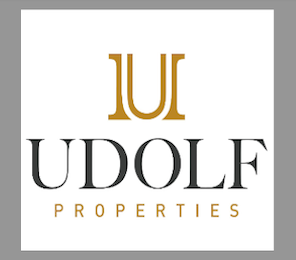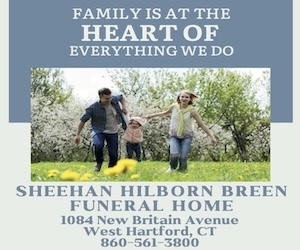
Pierre Sauvage
Pierre Sauvage was four when he and his parents immigrated to the U.S. from a small village in France in 1948. Twelve years later, he discovered that he and his parents were Jewish – and Holocaust survivors rescued by French villagers.
Around the same time, Ridgefield resident Varian Fry was pursuing a teaching degree at the Fairfield University Graduate School of Education and Allied Professions. He would die a few years later at age 59, after a short career as an English teacher at Joel Barlow High School in Redding.
In “And Crown Thy Good: Varian Fry in Marseille,” a new documentary film due out later this year, Sauvage tells the bigger story of Fry, who has been called “America’s Schindler.” As a journalist based in Marseille during World War II, Fry rescued more than 2,000 Jewish intellectuals including artist Marc Chagall, writers Franz Werfel and Leon Feuchtwanger, philosopher Hannah Arendt, and physicist Dr. Otto Meyerhoff, as well as non-Jewish opponents of the Nazi regime. Fry was the first American honored by Yad VaShem among the “Righteous Among the Nations.”
For most of his career, Sauvage has explored what he calls “the American experience of the Holocaust.” He is president of the Chambon Foundation, “the first non-profit educational foundation committed to exploring and communicating the necessary and challenging lessons of hope intertwined with the Holocaust’s unavoidable lessons of despair.” In 2005, the Varian Fry Institute was established as a division of the foundation.
The Emmy Award-winning filmmaker will be the keynote speaker at the 2011 Fairfield University Holocaust Remembrance Program, on Wednesday, Apr. 27. He will screen scenes from his new film and from “Weapons of the Spirit,” which tells the story of the Protestant villagers of Le Chambon-Sur-Lignon, who defied the Nazis and saved Sauvage’s parents and many other Jews.
Sauvage spoke with the Ledger about his work and how his own mysterious past has led to a lifelong pursuit to understand what makes a rescuer.
What impressed you about Varian Fry?
A: The Varian Fry story isn’t only important in terms of what it tells us about rescue and this particular mission, which was the most remarkable private rescue operation of the Nazi era. It also underscores what was not happening at that time and it underscores American apathy, given the challenge of the refugee crisis at that time. That dimension of the story hasn’t come through as clearly as it should and is one of my goals in the documentary: to underscore the share of responsibility of the world in what happened then.
We allowed the Nazis to think that we didn’t care, and whenever that happens, in front of any sort of bully, it is tantamount to a form of encouragement. Varian Fry did the opposite: he was demonstrating just how much he and the others who joined with him cared, and they carried out the largest private rescue operation of the war. And we have to ask, if more of that had gone on, what would have happened to those hundreds of thousands of refugees?
Varian was the leader of the mission, but he did not work alone. In the film, I focus on the Americans who worked with him in Marseille. There were refugees in France at the time who also played roles, but the Americans seemed interesting to me because they underscored what Americans did and didn’t do during the war.
The American diplomatic corps, by and large, acted very callously during that time. It was not a source of encouragement or moral support for refugees. The American vice consul in Marseille, Hiram Bingham IV, played a very important role in supporting the Fry mission, whereas his boss did everything he did to torpedo it. Fry was ultimately kicked out of France after a year, by the Vichy authorities, at the behest of the American officials who viewed him as a troublemaker.
How does your personal history inform your interest in telling Varian Fry’s story?
A: My parents had been in Marseille, where they fled from Paris after the German occupation. My father was a French Jew, my mother was a Polish Jew who came to Paris in the 1930s and, as a foreign Jew, she was particularly vulnerable in France. They found themselves in Marseille and my father sought the help of the Fry committee to get out. I know this not because he discussed it – he was always very discreet, and didn’t like to talk about it – but there is a list of what the committee called its “clients,” people who sought help, and my parents are on that list. They did not receive that help. So it’s a paradox, that the son of Jewish refugees is praising the work of a group that did not help them. But you don’t judge a rescue mission by what couldn’t be done; you judge a rescue mission by what was done. Varian Fry had been sent to France to help prominent artists, intellectuals, and anti-Nazi figures, Jewish and non-Jewish, because the feeling was that they were particularly vulnerable to being turned over to the Nazis. My father was a minor French intellectual and may not have been considered vulnerable or worthy enough.
I first came across the story when I stumbled on a copy of “Crossroads Marseille 1940” in a used bookstore in New York and I said, “Wait a second, my parents were in Marseille in 1940; that’s a book for me.” I found the author, Mary Jayne Gold living in New York and I called her. It turned out that she knew my parents. Ultimately, Mary Jayne willed me the rights to the book so I’m really looking forward to republishing it.
My parents couldn’t have talked about their experiences because that would have opened the door to saying that they and I were Jewish, and they had chosen to put all this behind them.
Are there other aspects of the story that you are drawn to?
A: I am fascinated by all these stories, by the reaction of bystanders to the Holocaust. That is my main interest, and what I have devoted decades to: not the belly of the beast, but how other people reacted to what was going on.
I don’t know if I would have developed this interest if it hadn’t been for the way I was raised. My parents raised me with a huge taboo so I have this incredible need to identify taboos and to puncture them, which is directly related to my upbringing. The biggest one in the U.S., related to the Holocaust, is “We didn’t know and we couldn’t have done anything even if we had known.” Both are demonstrably false, and we have to start coming to terms with everything we could know and what we did know, and what we could have done about it.
At the outset, Varian Fry got support from Mrs. Roosevelt, but that support waned and Fry became the bête noir of the diplomatic corps.
What is your focus as a documentary filmmaker, and what have you learned from exploring the behavior and motivations of rescuers?
A: At the time I got interested in rescue, the subject was considered a footnote to the story of the Holocaust and I argued strongly that rescuers are not a footnote but are essential to our understanding of the Holocaust. The most paradoxical aspect of the subject is that if you don’t include the rescuers in the discussion, people in future generations won’t be able to see just how dark that time was, because the rescuers underscore the darkness. Every rescuer underscores what it was possible to know and to do, and that makes the subject valuable to us.
Ultimately, all I’ve ever tried to do is break through the taboos that make us content with conventional and sometimes false views of the past. My hope is that my documentaries raise as many questions as they answer and lead to further thought and exploration.
We have a lot of clichéd notions about rescuers and we imagine them to be tortured souls who agonize over the decision they must make. Nothing could be further from the truth – they acted because they felt they had no choice, and because it seemed so natural to them.
That’s a very hopeful aspect of human nature. I’ve come to conclude that, at bottom, people who are most comfortable being who they are, are most likely to help others.
One of the most inaccurate words in this discussion is “selfless:” people are constantly talking about others as “selfless,” by which they mean taking personal risks. But in each case, every rescuer is like a person we meet in everyday life, people with a very clear and rooted sense of self, and out of that, they are not insecure about themselves and therefore recognize their commonality with others.
Another answer is that rescuers always had some positive role model in their youth – sometimes their parents, sometimes somebody else – but always somebody whom they loved or admired or both, who set an example. Varian Fry loved his father and he was in awe of his grandfather who had been involved in the Orphan Train Movement [a rescue effort of The Children’s Aid Society that resettled some 120,000 homeless and abandoned New York City street-children on family farms in the American West from 1853 to the early 1900s].
In a way, he was doing the same thing in Marseille , finding homes for the flotsam of society then. I have found this to be usually true, that there were always childhood influences that are crucial. Once you’re an adult, you are who you are, so early impressions really count.
This is why education can be so important and documentaries can be particularly useful, because they can reach kids in ways that books cannot, and can present real-live people. We need theory, and we also need to see people who impress us because we want to better understand their motivations and actions.
How can we use the lessons of the rescuer today?
A: It’s important for Jews to understand who our friends were and are, but to really pay attention to them, not just put them on pedestals and ignore them. There are criteria that one can use, above all, character and beliefs and a sense of self. Most especially, they shouldn’t be superficial criteria. For example, someone who has anti-Jewish stereotypes may still turn out to be a source of help. Those stereotypes can be very superficial, or merely a product of the society one lives in. A liberal solid-citizen type who knows what should and shouldn’t be said may say the right things but not be a source of help.
There were antisemitic rescuers during the Holocaust, but antisemitism for them had never meant what the Nazis were doing. When push came to shove, they didn’t mean for anyone to be murdered. If their character was such that they would stand up, they would help.
Universities in general did not behave well during the Holocaust – they expelled their Jewish colleagues, and you were far more likely to get help if you knocked on the door of a peasant than on the door of a professor. There are far fewer professors at Yad VaShem than others. The point is, if you’re an intellectual, you may fail to see what’s important.
“A Time For Rescue: America and the Holocaust” Holocaust Remembrance Program will be held Wednesday, Apr. 27, 7:30 p.m., Regina Quick Center for the Arts, Fairfield University, 1073 North Benson Road, Fairfield. Sponsored by Fairfield University’s Bennett Center for Judaic Studies, in conjunction with Campus Ministry and KADIMA, the University’s undergraduate Jewish cultural club.
In conjunction with this event, The Bennett Center will screen “Weapons of the Spirit” on Thursday, Apr. 14 at 7 p.m. in the multi-media room of the Dimenna-Nyselius Library at Fairfield University, followed by a discussion facilitated by Dr. Patricia Behre, associate professor of history, and Dr. Ellen Umansky, director of the Bennett Center.
Reservations are recommended for both events: (203) 254-4000, ext. 2066. For more information: www.fairfield.edu/judaicstudies
For more information on Pierre Sauvage and his work: www.chambon.org








 Southern New England Jewish Ledger
Southern New England Jewish Ledger








